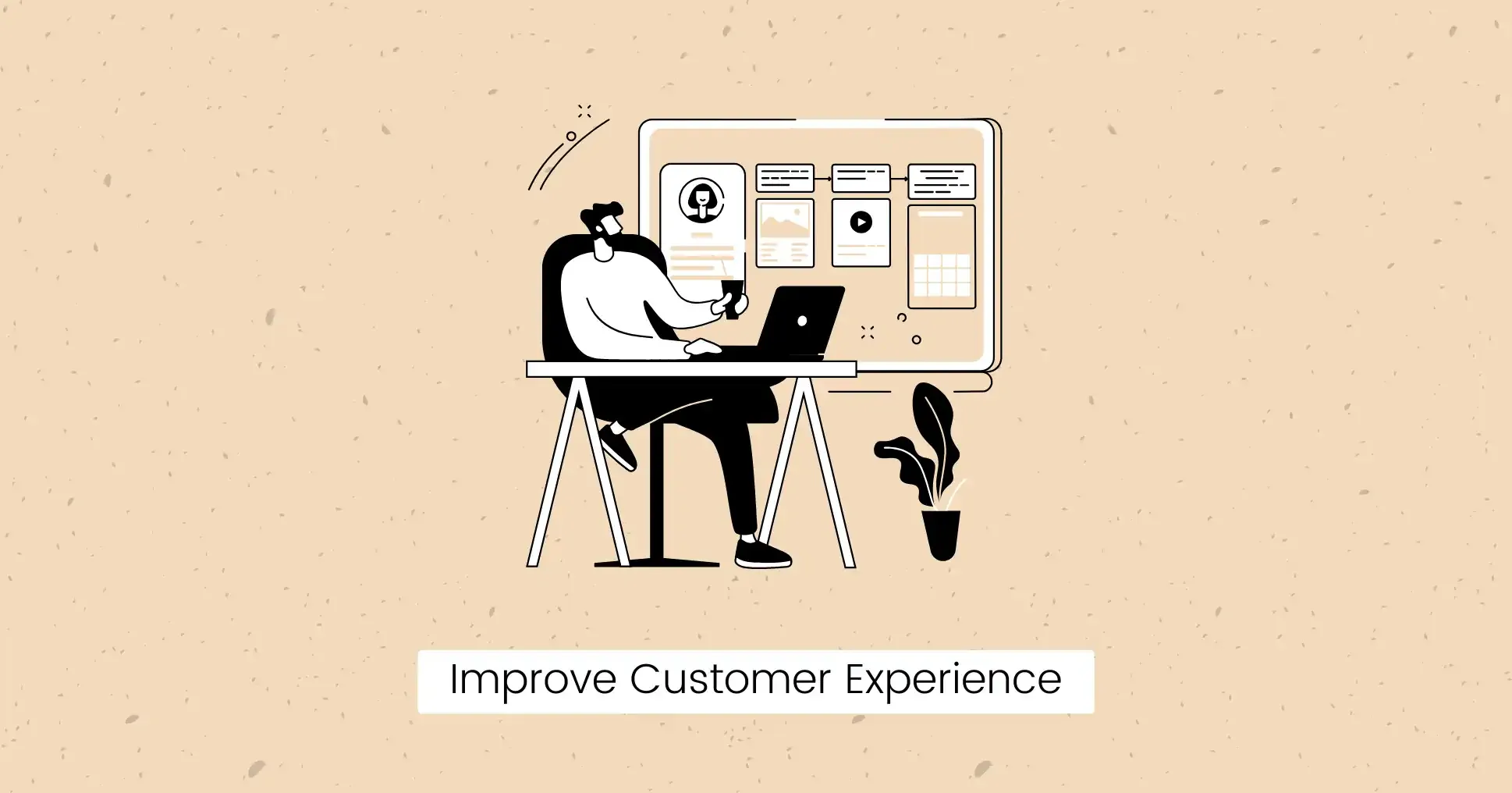From Paper to Pixel: Why Your Business Should Go Digital in 2025

Digital adaptation has changed the way businesses operate and get their products to market.
Relying on paper processes slows everything down and holds your company back from growth opportunities.
Lost documents and time-consuming manual work only add unnecessary complications to daily operations and make scaling your business harder than it needs to be.
Moreover, it is difficult to keep up with the competitors in the same industry.
The solution is simple.
Going digital simplifies operations, reduces costs, and gives your team the tools they need to work more efficiently.
If you’re still not convinced why you need a digital solution, read this guide to see how it can benefit your business in practical ways.
What is Digital Transformation?
Digital transformation is the process of using digital technologies to change how a business operates.
It involves replacing outdated manual processes like paperwork with modern, technology-driven solutions that improve efficiency, accuracy, and customer satisfaction.
Digital transformation strategy is not just about adopting new tools; it’s about rethinking how your business works.
For example:
A customer service team can assist customers with online chatbots and automated ticketing systems instead of phone-only support.
This provides value to the clients through faster responses and personalized online services.
6 Reasons Why Your Business Should Go Digital
Here are the benefits of a successful business transformation:
Time and Cost Efficiency

The main advantages of going digital are time and cost efficiency.
If you are a small business owner, you may have a limited budget and resources.
Running a business requires sustainably balancing costs and time, while traditional processes and manual workflows consume them unnecessarily.
Digital adoption allows you to manage resources effectively while making processes faster, smoother, and more economical.
Digitalize Your Business!
Discover how automation can help you save time and resources. Let us advise you to gain a decisive competitive advantage.

Benefits:
- Automate Repetitive Tasks: Save time and reduce labor costs by automating tasks like data entry and email automation.
- Lower Overhead Costs: Save on expenses for printing, paper, storage space, maintenance, and human resources.
- Reduce Training Costs: Make onboarding faster and less costly by using digital systems with user-friendly interfaces.
Key tips:
- Use a software solution to update inventory in real time instead of manual logging.
- Cloud storage solutions like Google Drive or Dropbox can be used for affordable and scalable storage.
- Look for easy-to-use tools for faster employee adoption.
Exposure to Target Audience

Reaching the target audience is a must for a business to succeed in a competitive environment.
Implementing digital solutions allows you to engage with your clients with greater precision and impact, no matter where they are.
Customers can also interact with your business across multiple platforms (website, app, blogs) and devices (computer, laptop, mobile devices, etc.).
Benefits:
- Global Audience: Online advertising methods and social media platforms allow you to connect with potential customers worldwide.
- Targeted Campaigns: Digital tools let you segment your audience and focus on specific groups based on demographics, interests, or behaviors.
- Personalized Content: You can deliver relevant content to increase engagement and conversion rates.
- Build Credibility: A strong online presence shows that you are professional and builds trust and loyalty with your audience.
Key Tips:
- Use search engine optimization (SEO) strategies to improve your ranking on Google.
- Use hashtags to expand your reach on platforms like Facebook, Instagram, or X.
- Use tools like Google Ads to create campaigns tailored to your audience’s needs and preferences.
- Use email marketing platforms like Mailchimp to deliver customized offers.
Improve Customer Experience

Another great advantage of digitalization is the ability to improve the customer experience.
Customers value quick responses to inquiries, faster order processing, and easier communication.
Satisfied customers are more likely to return and recommend your services to others.
Benefits:
- Faster Response Times: Chat with customers in real-time and provide easier access to services.
- 24/7 Availability: Your online store lets customers place orders 24/7 without waiting for someone to process them manually.
- Self-Service Options: Offer automated support systems or FAQs to help customers at all hours.
- Transparency: Keep your customers informed with accurate updates or service requests.
Key Tips:
- Ensure your website is mobile-friendly and easy to navigate.
- Use chatbots or live chat features to handle customer queries instantly.
- Provide accessibility features, like screen-reader compatibility, keyboard navigation, or multilingual options, to make your site inclusive.
- Regularly review and upgrade your digital systems to keep up with customer expectations.
Improve Collaboration and Communication

A successful digital transformation facilitates effective communication and collaboration between team members.
By adopting digital platforms, you can create an environment where teams can easily connect, share ideas, make informed decisions, and complete tasks on time.
Strengthen Your Team with Experts
Looking for specialized skills for your software project? Our experienced team integrates seamlessly and moves your project forward. Contact us for customized solutions!

Benefits:
- Remote Work: Digital tools allow employees to work from anywhere and improve productivity.
- Centralized Communication: Team members can work on projects simultaneously, ensuring that everyone stays on the same page.
- Easier File Sharing: Cloud-based systems allow teams to store, access, and share files from a single location.
Tips:
- Leverage tools like Slack and Trello for better communication and task management.
- Choose tools that integrate with your existing software to streamline workflows.
- Provide training and support to help team members adopt new tools quickly.
Scalability and Security

As your business expands, keeping up with the increasing demands on processes and resources is important.
Digital transformation addresses this challenge by offering scalable solutions that adapt to your company’s needs while maintaining data and operational security.
Benefits:
- Flexibility: Digital solutions grow with your business without requiring significant additional resources.
- Cost-Effective Growth: Online solutions can handle high traffic without costly infrastructure upgrades or upfront investments.
- Optimized Workflows: Scalable systems enable you to add new features and integrations without affecting existing operations.
Key Tips:
- Invest in software-as-a-service (SaaS) platforms that allow you to scale usage based on your needs.
- Partner with reputable service providers that prioritize both scalability and security.
- Follow data protection standards to safeguard sensitive information from breaches and unauthorized access.
- Look for strong security features to reduce downtime from cyberattacks or system failures.
Data-Driven Insights and Analytics

Data analytics can help you understand your audience and get valuable insights into customer data, market trends, and operations.
This means you can see what’s working and what is not, enabling you to refine your strategy and make informed decisions for better results.
Benefits:
- Better Decision-Making: Data analytics tools use dashboards and reports to provide factual evidence for improved decision-making.
- Customer Behavior: Analyze patterns in customer preferences and interactions for targeted marketing.
- Personalization: Leverage AI recommendation systems or historical data to provide customers with more personalized experiences.
Key Tips:
- Use tools like Google Analytics to monitor performance.
- Monitor key performance indicators (KPIs) like click-through (CTR) and conversion rates.
- Track the success of marketing campaigns and e-commerce sales to assess ROI.
How to Start Digital Transformation
Adopting digital transformation can be challenging, especially for small businesses that lack the necessary skills.
However, you can ensure a smooth transition and meet your business objectives with the correct approach.
Here’s how you can do this:
Need Help Evaluating Your Software Options?
Our experts can help you analyze your specific needs and guide you through the decision process. Schedule a free consultation to discuss your requirements and find the best solution for your business.

Identify Bottlenecks
- Evaluate your existing processes to identify gaps.
- Do you want to reduce costs or expand your market reach?
- Are certain tasks taking too long to process?
- Is customer data difficult to manage on paper?
- These are areas where digital tools can make an immediate impact.
Focus on Customer Experience
- Communicate with all stakeholders to understand their pain points and expectations.
- Review KPIs and revenue growth to measure success.
- Collect feedback for increased customer satisfaction.
- Use tools to simplify services and improve business processes.
Choose the Right Tools
- Start by selecting tools that suit your needs.
- Focus on tools that directly support your goals and can scale with your business.
- Research platforms for automation, cloud storage, analytics, and collaboration.
- For example, if you have a service-based company, you could get customer relationship management (CRM) software .
- Address the skills gap through training and support.
Hire A Dedicated Team
- Hire a website creation agency like JetCoders to help build custom software according to your needs.
- Get access to dedicated developers who bring specialized expertise in the latest tools and technologies.
- This will allow your internal team to focus on core business activities while experts handle the technical aspects.
Final Words
Digitalization is no longer an option; it is a must if you want to future-proof your organization and remain relevant.
It is a smart investment that helps businesses save time and stay competitive.
Start building your digital presence by setting clear goals and carefully choosing your partners.
FAQs
What are the challenges in digital transformation?
Digital transformation challenges include:
- Lack of technical expertise.
- High implementation costs.
- Integrating legacy systems.
- Data security issues.
What are the 4 Ps of digital transformation?
The 4 Ps of digital transformation are:
- Process: Automate workflows to reduce manual tasks.
- People: Empower employees with the right skills, tools, and a culture that welcomes change.
- Platform: Modern technology adoption, such as cloud systems, advanced analytics, and AI.
- Product: Design a product or service to align with market trends.